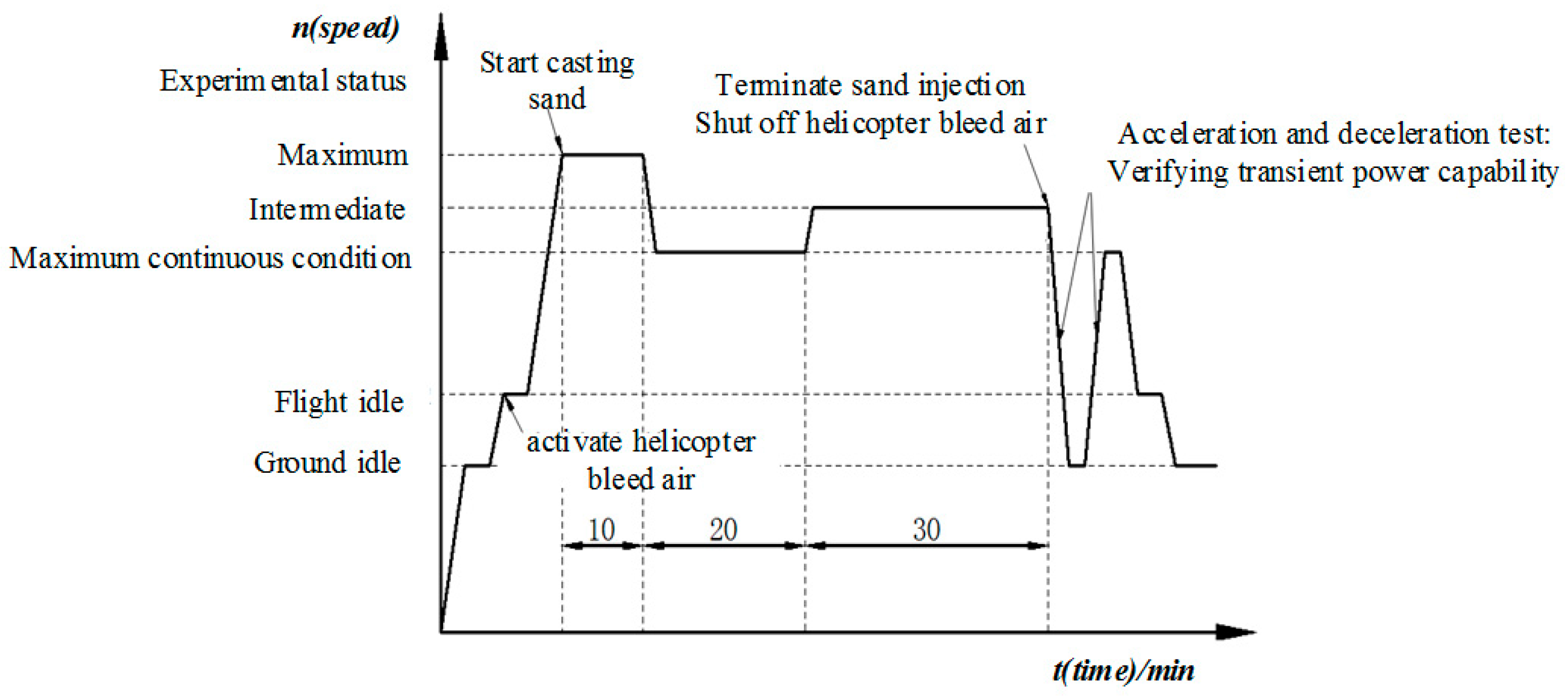Research on the Impact of the Sand and Dust Ingestion Test on the Overall Performance of Turboshaft Engines
Abstract
1. Introduction
2. Sand Ingestion Test Requirements of Turboshaft Engines
- The maximum state of the engine is the highest stable state at which the engine operates normally. It is typically used during conditions such as hovering out of ground effect, high-speed-level flight, and maximum climb in helicopters. In this state, the engine parameters are relatively high and can only be utilized for a limited duration. So, the maximum state has the highest exhaust gas temperature of the three operating states;
- The maximum continuous state is the highest state at which the engine is permitted to operate indefinitely. During flight missions, the duration of use in this condition is not subject to any restrictions. Thus, the maximum continuous state has the lowest exhaust gas temperature of the three operating states;
- The operating parameters of the intermediate state, such as the gas generator speed, turbine inlet temperature, and output power, lie between those of the maximum continuous state and the maximum state. These parameters are selected based on the requirements of the helicopter. The exhaust gas temperature of this state lies between that of the other two.
3. Sand and Dust Ingestion Test Equipment
3.1. Test Engine
3.2. Sand and Dust Injection Test Apparatus
4. Experimental Procedure
- (1)
- The engine is started and sequentially advanced to ground idle and flight idle conditions;
- (2)
- The engine is advanced to the maximum condition to begin sand and dust introduction, which lasts for 10 min. The engine is throttled back to the maximum continuous condition, sustained for 20 min. The engine is advanced to an intermediate state, maintained for 30 min before ceasing sand and dust introduction and shutting off helicopter air bleed;
- (3)
- The engine is rapidly decelerated to ground idle and then quickly accelerated back to the maximum continuous condition to complete the acceleration and deceleration test, verifying the engine’s transient power capability after sand and dust ingestion;
- (4)
- The engine is sequentially decelerated to flight idle and ground conditions, completing one phase of the sand and dust ingestion test.
5. Experimental Results
- The pressure ratio refers to the ratio of the total pressure at the compressor outlet to the total pressure at the compressor inlet. Defining the pressure ratio as , the total pressure at the compressor outlet as , and the total pressure at the compressor inlet as , the pressure ratio is then given by
- The equivalent airflow refers to the conversion of the engine’s bench performance parameters, measured under various atmospheric conditions, into performance parameters under standard sea-level static conditions. Defining the airflow as , the equivalent airflow as , and the ambient temperature and ambient pressure as and , respectively, the equivalent airflow is then given by
5.1. Engine Common Operating Line
5.2. Turbine Exhaust Temperature
5.3. Engine Power and Specific Fuel Consumption
5.4. Engine Disassembly Inspection
6. Conclusions
- (1)
- A short period of sand and dust ingestion has minimal impact on the engine’s common operating line. However, there is a noticeable decrease in the equivalent airflow as the duration of sand and dust ingestion increases, consequently leading to an upward shift in the engine’s common operating line. This indicates that the engine might experience a surge after long-enough sand and dust ingestion;
- (2)
- As the sand and dust ingestion time increases, the turbine exhaust temperature rises correspondingly, with the maximum increase reaching 27.9 °C. However, the impact of sand and dust ingestion on the turbine exhaust temperature under high power states of the engine is relatively minor;
- (3)
- After the sand and dust ingestion test, the engine experienced a power loss of approximately 11.33% and an increase in SFC of about 5.06% at the maximum continuous condition. This meets the GJB 242A requirement that the increase in SFC should not exceed 10% but does not meet the requirement that power loss should not exceed 10%. The test process included 27 normal startups and did not affect the engine’s transient power capability, indicating that the engine has good sand and dust resistance;
- (4)
- Post-ingestion disassembly inspections revealed varying degrees of wear on components of the compressor and varying degrees of sand adhesion, hole blockage, and accumulation on components of the turbine, with no signs of imminent failure detected. It is recommended that subsequent technical research be conducted on the sand erosion and wear patterns of compressor blades and the preparation of anti-abrasion coatings. Also, research on the characteristics of surface sand deposition and the optimization design of anti-sand-deposition cooling structures is suggested for the turbine blades.
Author Contributions
Funding
Data Availability Statement
Conflicts of Interest
References
- Ramachandran, R.C.S.; Balasubramanian, V.; Ananthapadmanabhan, P.V. Thermal cycling behaviour of plasma sprayed lanthanum zirconate based coatings under concurrent infiltration by a molten glass concoction. Ceram. Int. 2013, 39, 1413–1431. [Google Scholar]
- Bajracharya, T.; Acharya, B.; Joshi, C.; Saini, R.; Dahlhaug, O. Sand erosion of pelton turbine nozzles and buckets: A case study of chilime hydropower plant. Wear 2008, 264, 177–184. [Google Scholar] [CrossRef]
- Zhang, Z.P.; Zhang, J.; Chai, Q.; Li, C.W.; Wu, X.L. Velocity estimation for the impact object against the aero-engine blade. J. Air Force Eng. Univ. Nat. Sci. Ed. 2015, 6, 7–10. (In Chinese) [Google Scholar]
- Wei, X.X.; Li, G.L. The impact of sand on the blades of airplane engines. J. Beijing Inst. Technol. 2002, 471–474. (In Chinese) [Google Scholar] [CrossRef]
- He, G.Y.; Li, Y.H.; Chai, Y.; Zhang, Y.F.; Wang, G. Review of key issues on coating against sand erosion of aero-engine compressor blade. Acta Aeronaut. Et Astronaut. Sin. 2015, 36, 1733–1743. (In Chinese) [Google Scholar]
- Zeng, Q. Numerical Simulation of Sand Trajectories in Airflow Channel; Nanjing University of Aeronautics and Astronautics: Nanjing, China, 2013. (In Chinese) [Google Scholar]
- Saxena, S.; Jothiprasad, G.; Bourassa, C.; Pritchard, B. Numerical Simulation of particulates in multi-stage axial compressors. J. Turbomach. 2017, 139, 031013. [Google Scholar] [CrossRef]
- Pfledderer, L.; Pepi, M. Sand erosion test method for DOD unique environments. In Proceedings of the Tri-Service Corrosion Conference, Denver, CO, USA, 3–6 December 2007; pp. 1–24. [Google Scholar]
- Pepi, M.; Squillacioti, R.; Pfledderer, L.; Phelps, A. Solid particle erosion testing of helicopter rotor blade materials. J. Fail. Anal. Prev. 2012, 12, 96–108. [Google Scholar] [CrossRef]
- Zeng, L.; Cheng, L.; Li, N.; Chen, J.; Li, S.L. Comparison and analysis of morphology of standard sand and typical sand particle in aeroengines and swallowing test. Aeroengine 2019, 1, 97–102. (In Chinese) [Google Scholar]
- GJB241-1987; General Specification for Engine, Aircraft, Turbojet and Turbofan. Commission for Science, Technology and Industry for National Defense: Beijing, China, 1987. (In Chinese)
- GJB242-1987; General Specification for Engine, Aircraft, Turbprop and Turboshaft. Commission of Science, Technology and Industry for National Defense: Beijing, China, 1987. (In Chinese)
- GJB2026-1994; Requirements for Test of Sand Ingestion, Aircraft Turbojet and Turbofan Engine. Commission for Science, Technology and Industry for National Defense: Beijing, China, 1994. (In Chinese)
- Dunn, M.G.; Padova, C.; Moller, J.E.; Adams, R.M. Performance deterioration of a turbofan and a turbojet engine upon exposure to a dust environment. Gas Turbines Power 1987, 109, 336–343. [Google Scholar] [CrossRef]
- Ghenaiet, A. Study of sand partical trajictories and erosion into the First compression stage of a turbofan. J. Turbomach. 2012, 134, 051025. [Google Scholar] [CrossRef]
- Wylie, S.; Bucknell, A.; Forsyth, P.; Mcgilvray, M.; Gillespie, D.R.H. Reduction in flow parameter resulting from volcanic ash deposition in engine representative cooling passages. J. Turbomach. 2017, 139, 031008. [Google Scholar] [CrossRef]
- Chen, L.; Liu, Z.L.; Liu, Y.F. Study on sands wallow test of an aviation turboshaft engine. Aeroengine 2018, 79–82. (In Chinese) [Google Scholar]
- Ma, C.; Wei, H.T. An aero-engine sand swallow test method. Sci. Technol. Eng. 2015, 15, 239–242. (In Chinese) [Google Scholar]
- Chang, H.W.; Li, Y.J. Technical analysis of sand ingestion test on Aero-engine. Mech. Eng. 2019, 8, 126–127. (In Chinese) [Google Scholar]
- Yang, F.; Tian, Z.; Zhang, Z.B. Design and research of sand ingestion test device for high-power turboprop whole engine. Sci. Technol. Eng. 2020, 21, 8573–8578. (In Chinese) [Google Scholar]
- GJB242A-2018; General Specification for Engine, Aircraft, Turbprop and Turboshaft. Commission for Science, Technology and Industry for National Defense: Beijing, China, 2018. (In Chinese)
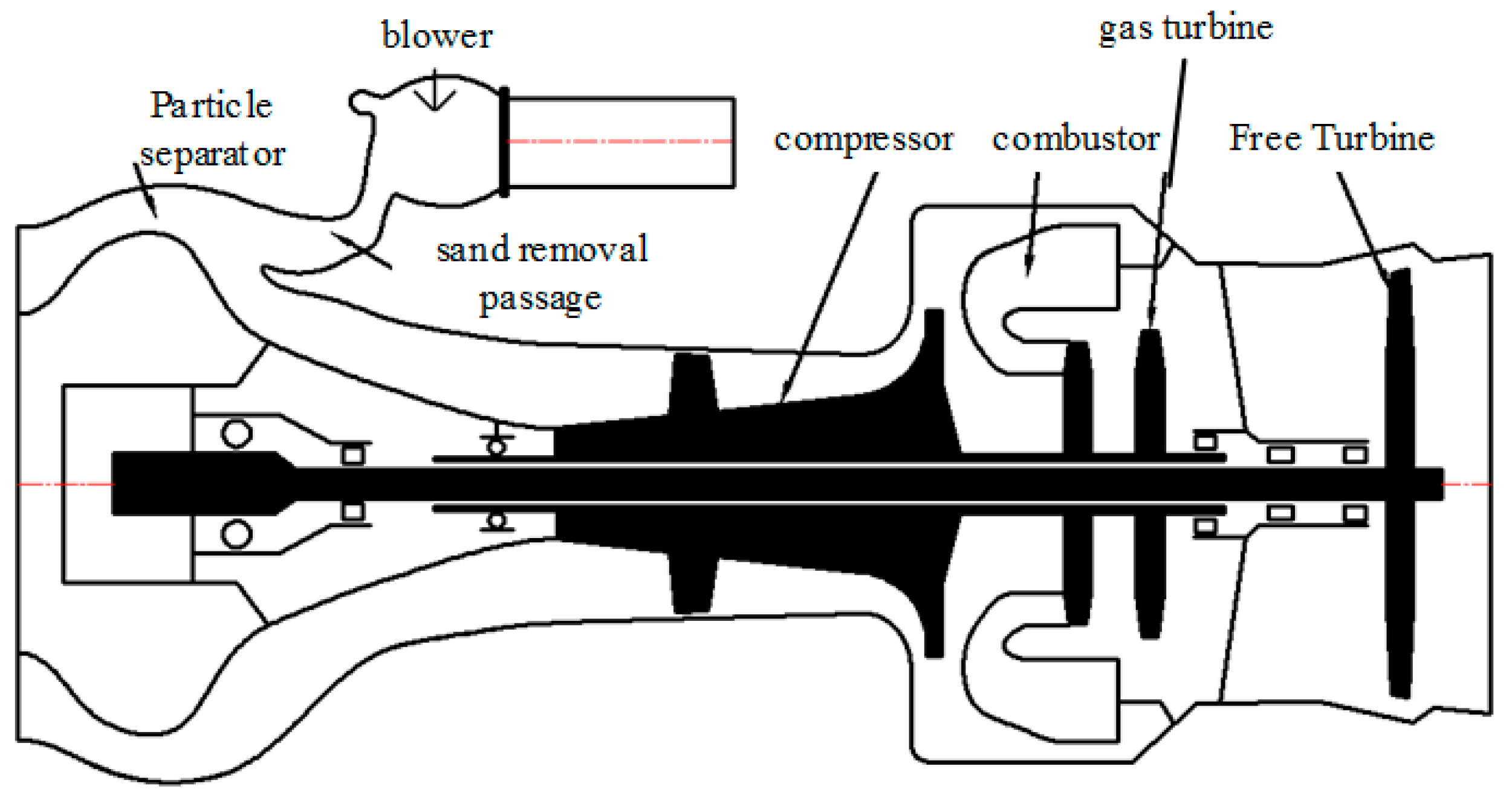
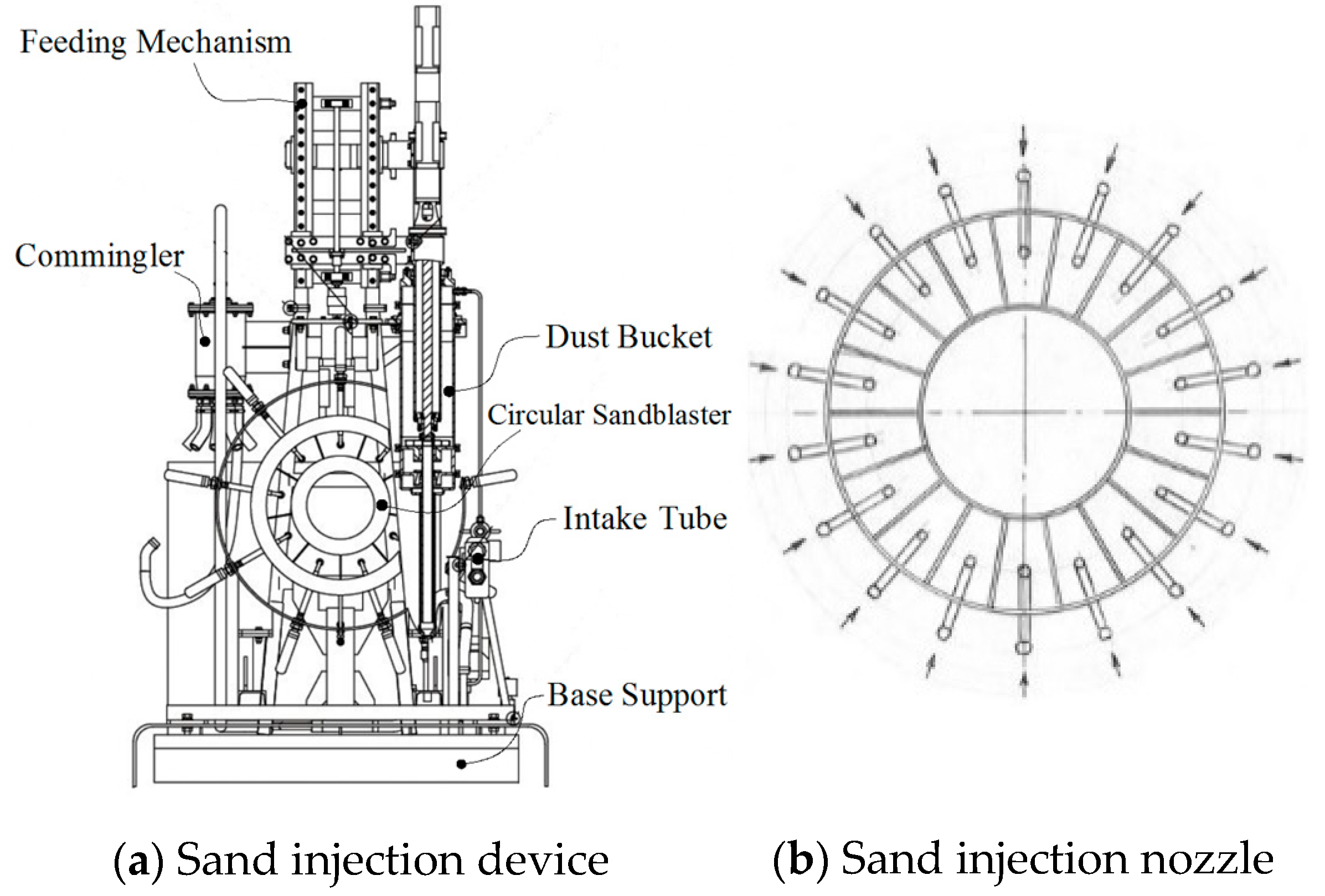

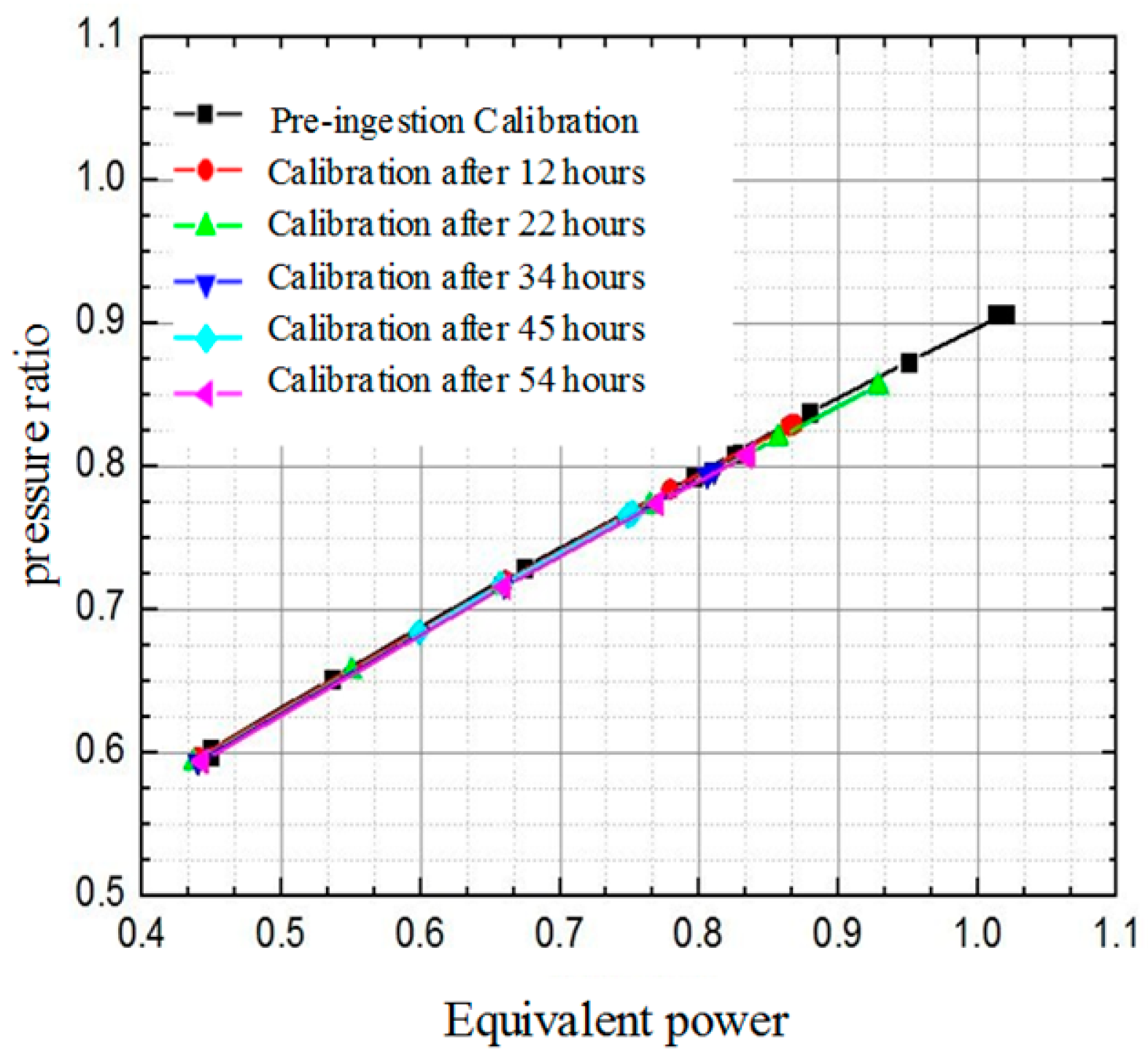
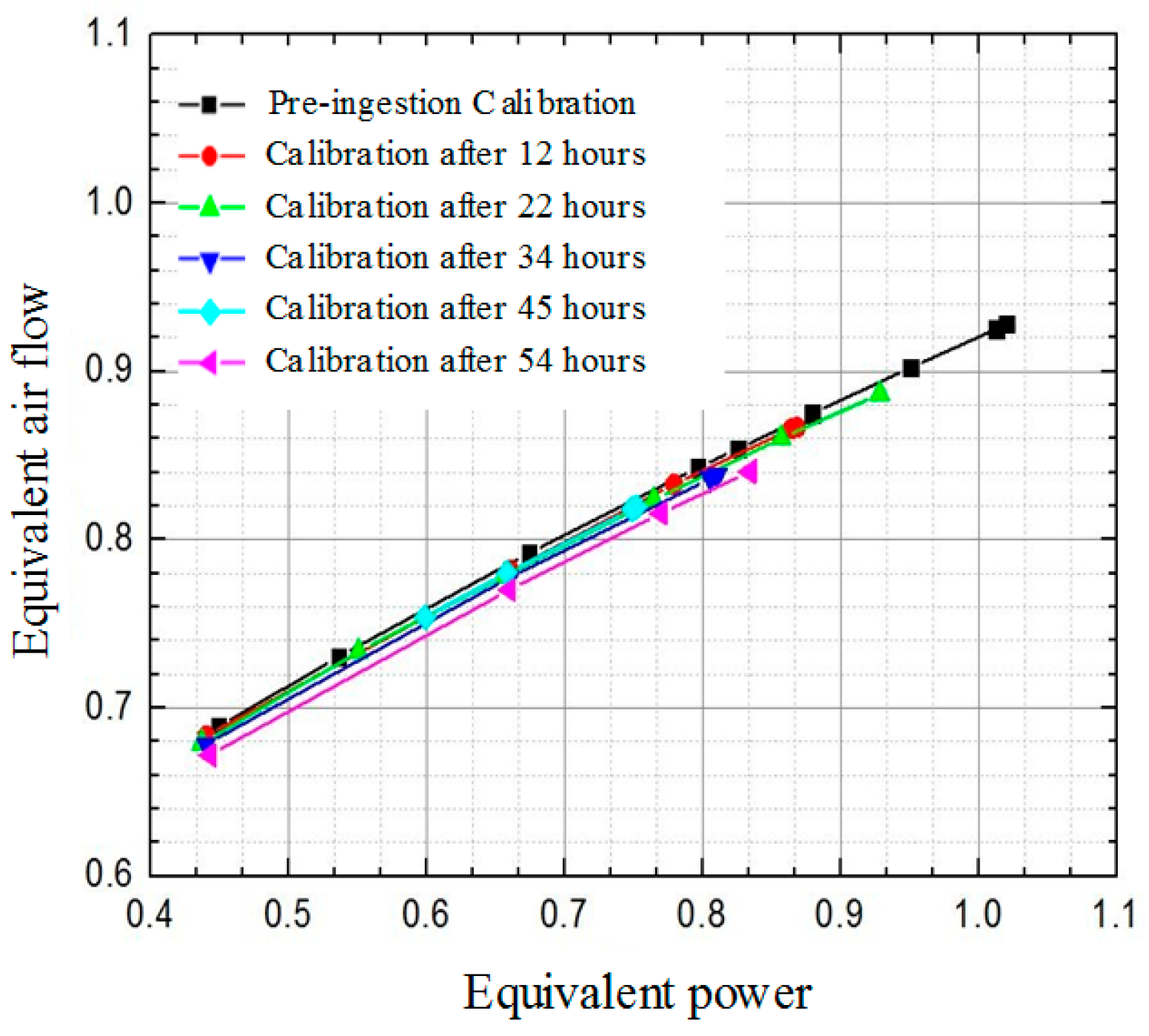
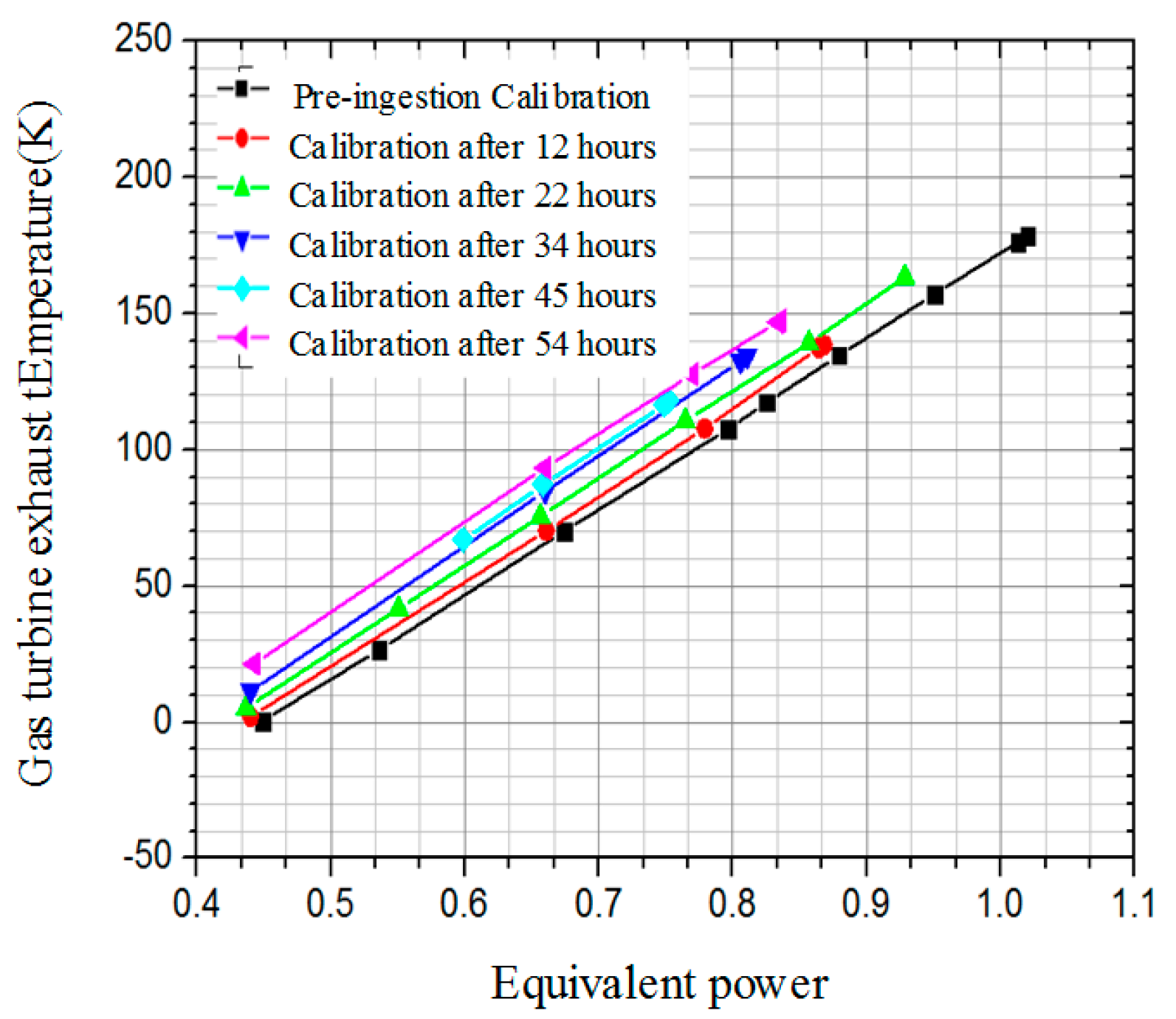
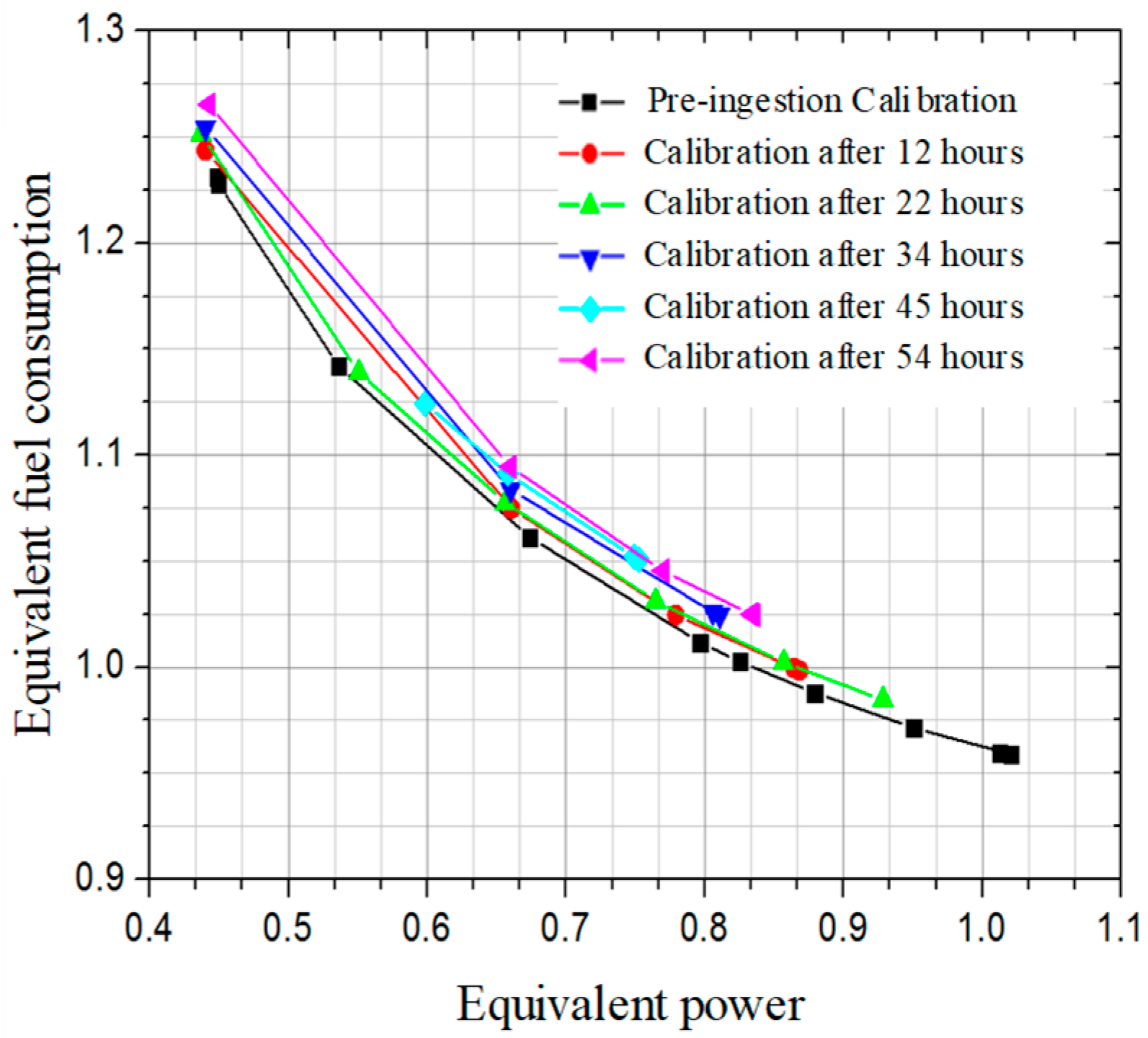
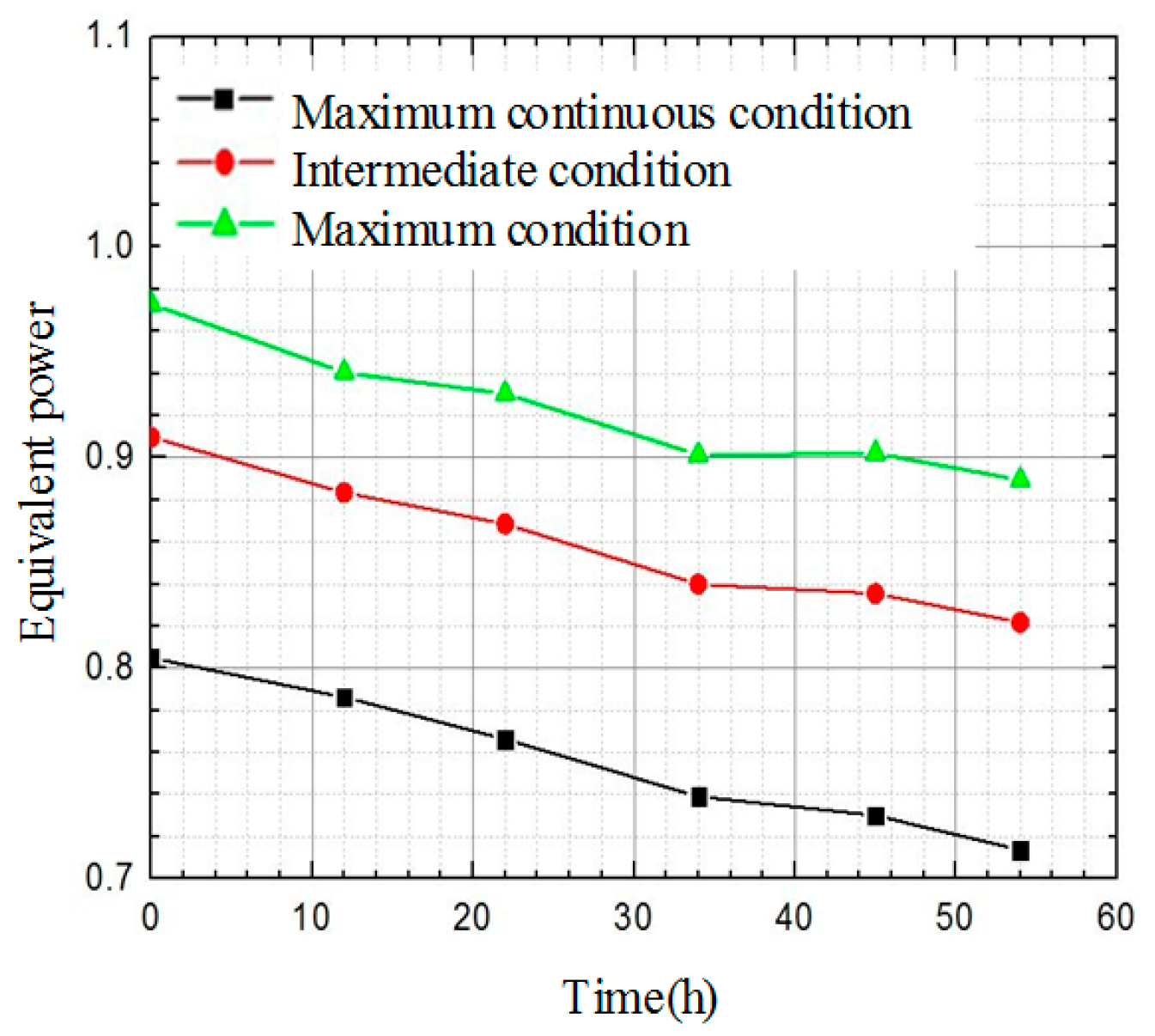
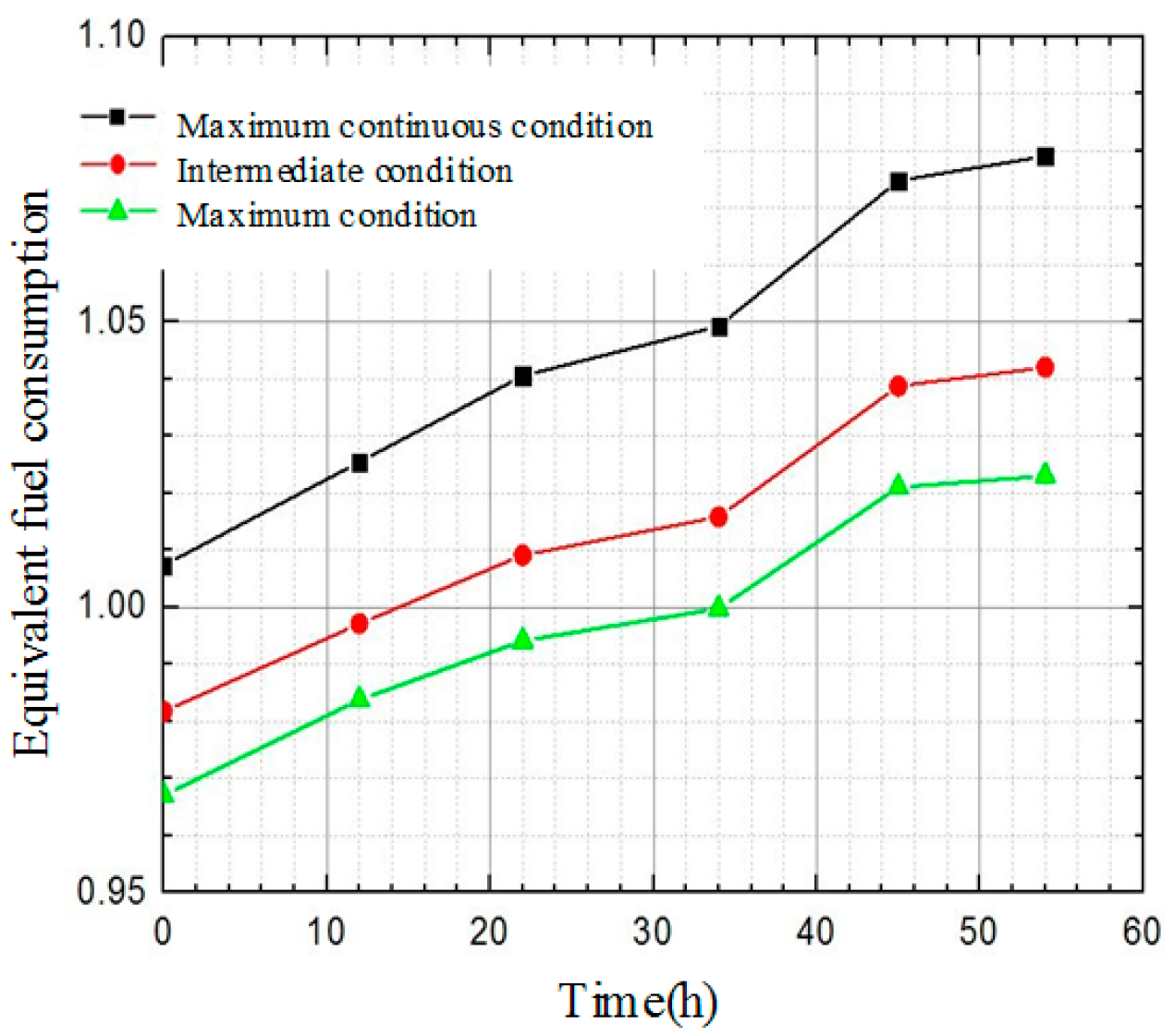
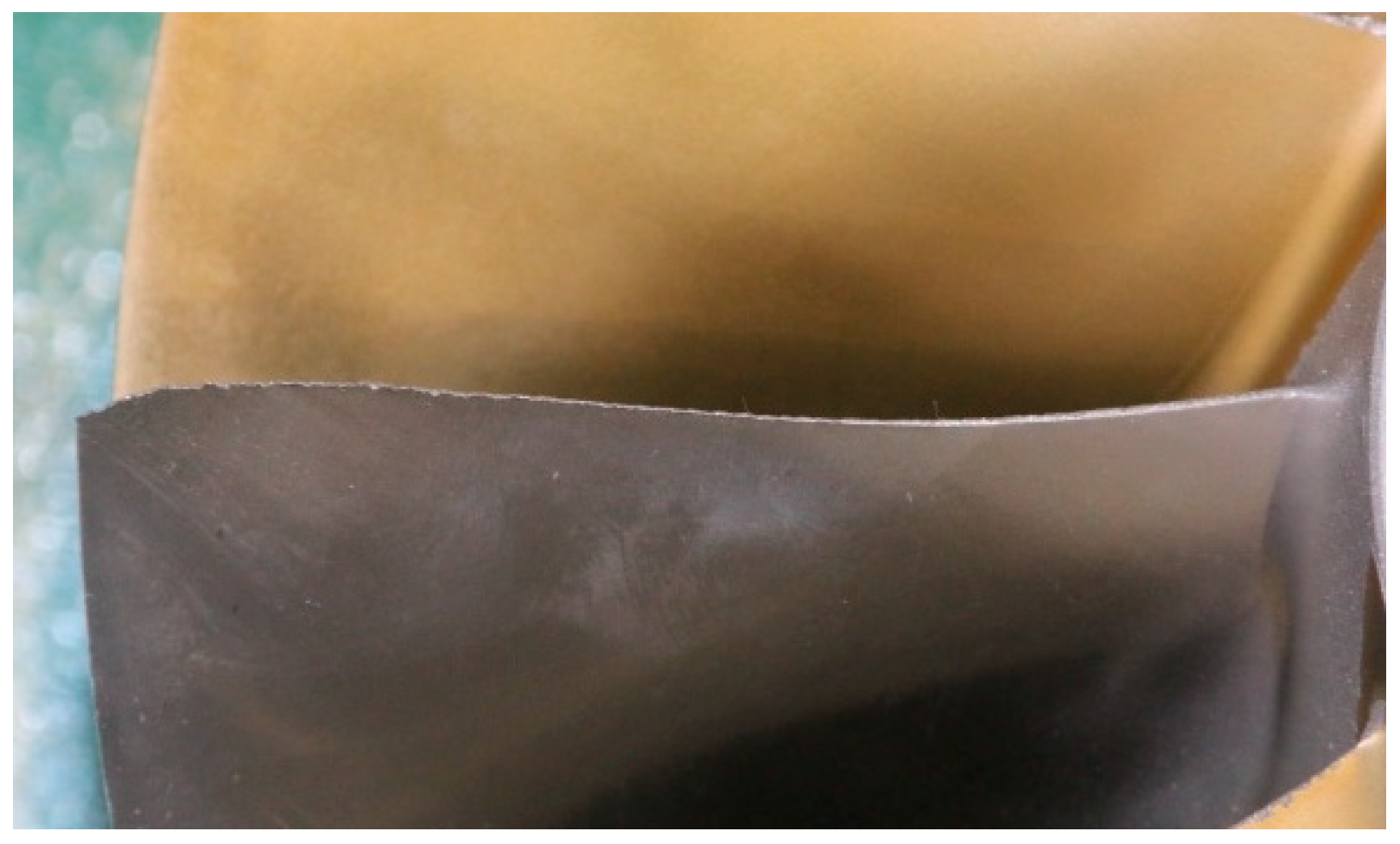
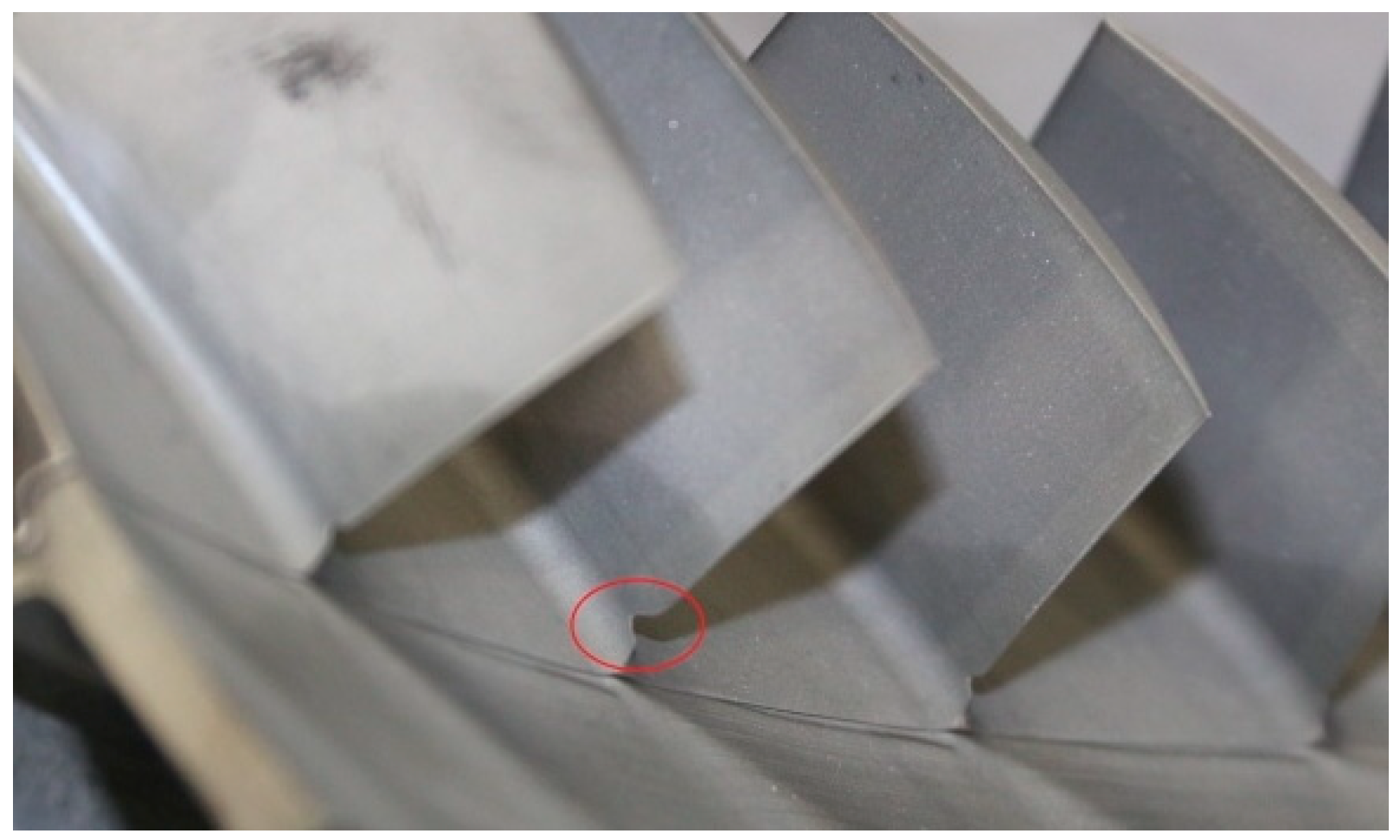
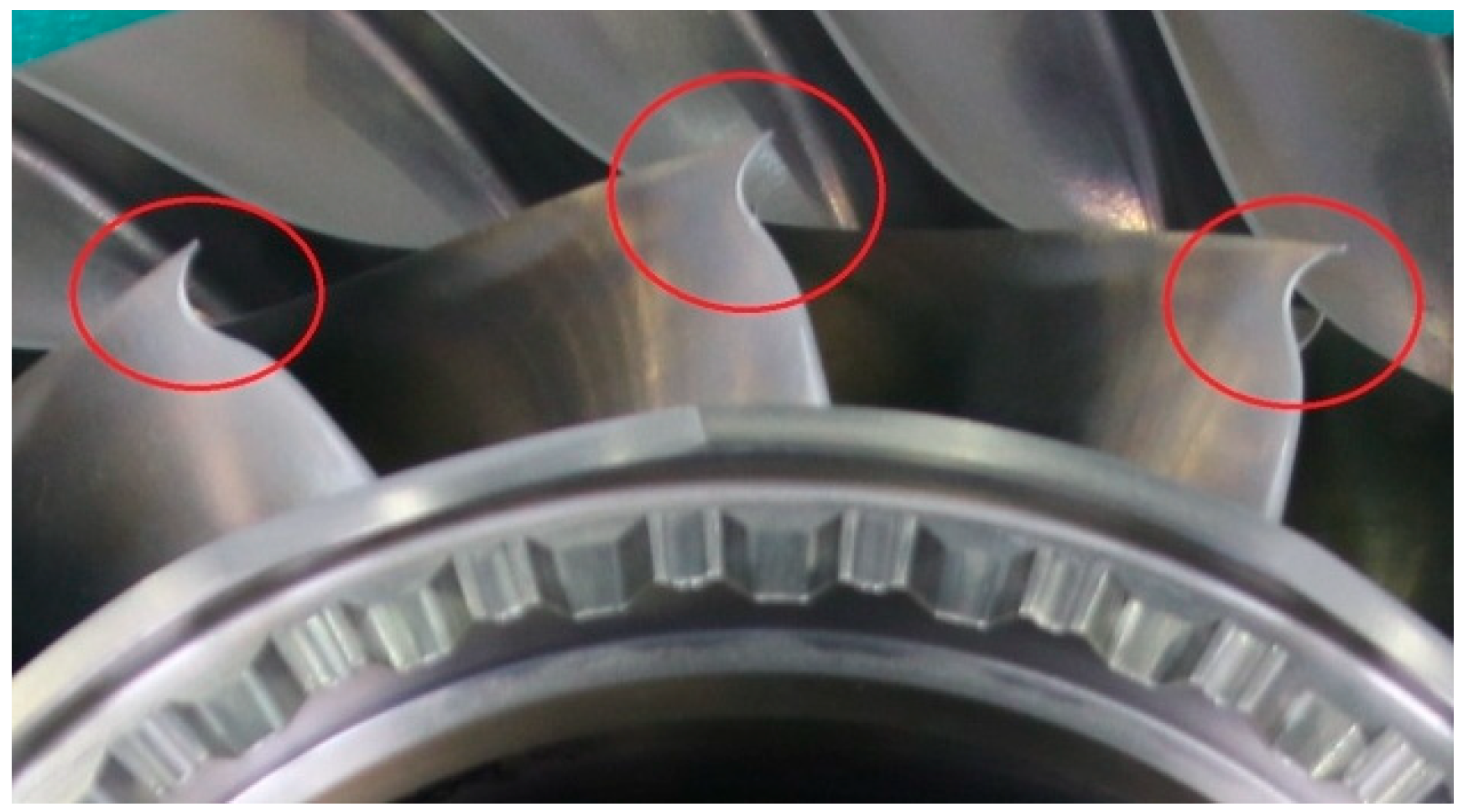
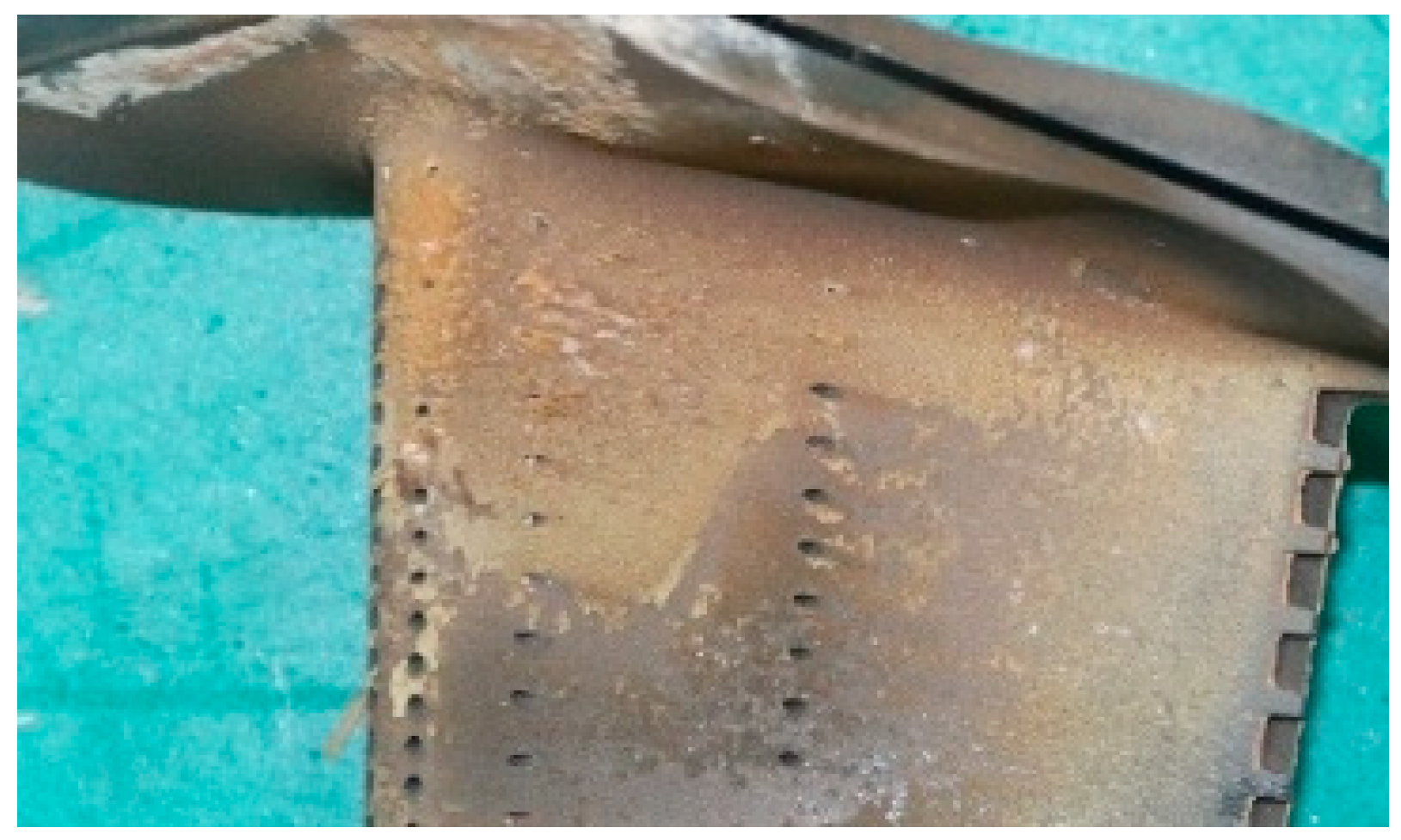

| Dust Concentration/(mg/m3) | Test Time/(h) | Power Loss/(%) | Increased Fuel Consumption Rate/(%) |
|---|---|---|---|
| 53 | 54 | 10 | 10 |
| Fine Sand Particle Size/(μm) | Mass Percent/% |
|---|---|
| 40~80 | 9 ± 3 |
| 20~40 | 18 ± 3 |
| 10~20 | 16 ± 3 |
| 5~10 | 18 ± 3 |
| 0~5 | 39 ± 2 |
| Engine Status | Test Time/(h) | Duration/(min) | Starting Times |
|---|---|---|---|
| Maximum state | 9 | 10 | No less than 27 |
| Intermediate state | 27 | 30 | |
| Maximum continuous state | 18 | 20 | |
| Grand total | 54 | / | No less than 27 |
| Order Number | Equivalent Power/% | T45 Increment/°C |
|---|---|---|
| 1 | 64.7 | 27.9 |
| 2 | 86.3 | 26.5 |
| 3 | 93.7 | 24.5 |
| 4 | 100 | 22.2 |
| 5 | 102.9 | 21.0 |
| Order Number | Equivalent Power/% | Percentage Increase in SFC/% |
|---|---|---|
| 1 | 64.7 | 2.55 |
| 2 | 86.3 | 2.42 |
| 3 | 93.7 | 2.32 |
| 4 | 100 | 2.23 |
| 5 | 102.9 | 2.18 |
| Engine Status | Power Loss/% | SFC Increase/% |
|---|---|---|
| Maximum state | 11.33 | 6.05 |
| Intermediate state | 9.67 | 5.02 |
| Maximum continuous state | 8.60 | 4.44 |
Disclaimer/Publisher’s Note: The statements, opinions and data contained in all publications are solely those of the individual author(s) and contributor(s) and not of MDPI and/or the editor(s). MDPI and/or the editor(s) disclaim responsibility for any injury to people or property resulting from any ideas, methods, instructions or products referred to in the content. |
© 2025 by the authors. Licensee MDPI, Basel, Switzerland. This article is an open access article distributed under the terms and conditions of the Creative Commons Attribution (CC BY) license (https://creativecommons.org/licenses/by/4.0/).
Share and Cite
Wang, Q.; Zhang, W.; Yuan, X.; Wang, Y.; Shen, Z.; Wang, F. Research on the Impact of the Sand and Dust Ingestion Test on the Overall Performance of Turboshaft Engines. Aerospace 2025, 12, 146. https://doi.org/10.3390/aerospace12020146
Wang Q, Zhang W, Yuan X, Wang Y, Shen Z, Wang F. Research on the Impact of the Sand and Dust Ingestion Test on the Overall Performance of Turboshaft Engines. Aerospace. 2025; 12(2):146. https://doi.org/10.3390/aerospace12020146
Chicago/Turabian StyleWang, Qingping, Wenchao Zhang, Xin Yuan, Yixuan Wang, Zhongliang Shen, and Fei Wang. 2025. "Research on the Impact of the Sand and Dust Ingestion Test on the Overall Performance of Turboshaft Engines" Aerospace 12, no. 2: 146. https://doi.org/10.3390/aerospace12020146
APA StyleWang, Q., Zhang, W., Yuan, X., Wang, Y., Shen, Z., & Wang, F. (2025). Research on the Impact of the Sand and Dust Ingestion Test on the Overall Performance of Turboshaft Engines. Aerospace, 12(2), 146. https://doi.org/10.3390/aerospace12020146




